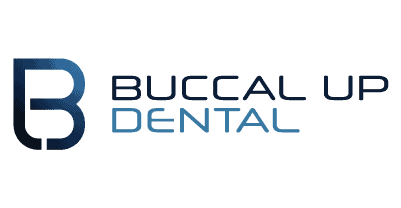
07 Nov End-of-Year Financial Planning for Dental Practice Owners
End-of-Year Financial Planning for Dental Practice Owners
As the year comes to a close, end-of-year financial planning becomes one of the most important steps for dental practice owners. It’s not just about wrapping up numbers—it’s about maximizing profits, minimizing tax liability, and preparing for a stronger financial future. Your dental practice isn’t only about providing quality care; it’s a business that requires careful financial management.
Taking time to analyze your financial results helps you identify what worked, what didn’t, and how to improve next year. Whether your goal is to expand your clinic, purchase new equipment, or boost profit margins, having a structured financial plan ensures lasting stability and success.

Assessing Your Current Financial Health
Before taking new financial steps, you need to know exactly where your practice stands. Reviewing your numbers helps you make smarter decisions and reveals hidden opportunities.
Reviewing Profit & Loss Statements
Start by analyzing your Profit & Loss (P&L) statement. This document gives you a clear view of your practice’s revenue, expenses, and profit margins. Look at trends from previous years and identify whether your revenue is growing or stagnating. Pay close attention to:
-
Total revenue and monthly performance
-
Top-performing dental services
-
Major expenses such as supplies, lab fees, and payroll
-
Gross and net profit margins
Ideally, your dental practice should maintain a net profit margin between 30% and 40%, depending on the type of services you offer. If your margins are lower, review where costs can be trimmed without affecting quality of care.
Evaluating Overhead and Expenses
Overhead costs can easily eat into profits if not monitored. Key expense categories include rent, utilities, payroll, dental supplies, and marketing. Consider negotiating lease agreements, joining dental buying groups, or sourcing from more competitive vendors to reduce costs.
Even a small 3% reduction in overhead can save thousands annually, providing additional funds for growth or technology upgrades.
Optimizing Tax Strategies Before Year-End
Smart tax planning can make a significant difference to your bottom line. Before December 31, review your tax situation and take advantage of deductions that align with your long-term goals.
Leveraging Section 179 Deductions
Dentists planning to purchase new equipment—like digital scanners, X-ray machines, or dental chairs—can benefit from Section 179 deductions. This allows you to deduct the entire cost of qualifying equipment in the year of purchase rather than depreciating it over several years.
Always consult your accountant to ensure your timing and cash flow align with these deductions.
Retirement Plan Contributions
Contributing to a 401(k) or SEP IRA is an excellent way to lower your taxable income while preparing for retirement. A SEP IRA allows contributions up to $69,000 for 2025, depending on income. Employer matching contributions also enhance employee satisfaction while benefiting the practice owner through tax savings.
Enhancing Cash Flow Management
Cash flow is the foundation of every healthy dental practice. Without strong liquidity, even profitable clinics can experience stress.
Reviewing Accounts Receivable
Review your accounts receivable to see how much money patients or insurance companies owe your practice. Uncollected payments can accumulate quickly. To improve collections, you can:
-
Send regular automated payment reminders
-
Offer small discounts for early payments
-
Use third-party billing systems or electronic payment portals
Good cash flow ensures that you can pay bills on time, invest in upgrades, and handle emergencies without debt.
Budgeting for the Next Year
A forward-looking budget is one of the most powerful financial tools for dentists. Use this year’s performance as a base, and project realistic goals for the next twelve months. Allocate spending to categories like payroll, supplies, marketing, rent, and maintenance.
Tracking budget variances monthly will help you spot issues early and stay on track with your profit goals.

Investing in Practice Growth
Long-term profitability comes from investing wisely in areas that improve efficiency and patient satisfaction.
Technology and Equipment Upgrades
Modern dental technology enhances patient experience and workflow efficiency. Consider upgrading to digital scanners, laser treatment tools, or cloud-based management software. These upgrades often qualify for tax deductions under Section 179 and provide long-term returns through reduced costs and better patient outcomes.
Marketing and Patient Retention
A thriving dental practice doesn’t only rely on new patients—it grows through strong retention and referrals. Focus on:
-
Optimizing your website and local SEO to appear in Google searches
-
Updating your Google Business Profile
-
Creating patient loyalty or referral programs
-
Encouraging satisfied patients to leave online reviews
Investing in consistent marketing builds a steady stream of patients and strengthens your practice’s reputation.
Protecting Your Assets and Managing Risk
Protecting your practice from unforeseen risks is a vital part of financial planning. Review your insurance coverage regularly to make sure it’s adequate. Essential policies include professional liability insurance, business interruption insurance, and cybersecurity insurance.
Also, check that your employee and vendor contracts are up to date and legally sound. Working with a legal advisor ensures compliance with employment laws and reduces your exposure to future disputes.
Building a Strong Financial Team
A successful dental practice depends on a strong support team. No dentist can manage everything alone. Build a financial team that includes:
-
A Certified Public Accountant (CPA) who understands dental finances
-
A financial advisor experienced in healthcare investments
-
A bookkeeper or office manager who maintains accurate daily records
This team helps you make informed decisions, stay compliant, and achieve better profitability.
Using KPIs to Drive Performance
Tracking Key Performance Indicators (KPIs) gives you a clear picture of how your practice performs financially and operationally. Focus on the following metrics:
-
Production per hour
-
Collections ratio
-
Overhead percentage
-
Case acceptance rate
-
Hygiene reappointment rate
Review these metrics monthly with your team. When you understand your data, you can make informed decisions that directly improve your bottom line.
Common Financial Mistakes to Avoid
Even successful dentists can make financial mistakes that limit growth. Avoid these common pitfalls:
-
Mixing business and personal accounts
-
Waiting until tax season to review finances
-
Overspending on new equipment without assessing ROI
-
Ignoring cash flow fluctuations
-
Failing to plan for retirement or insurance coverage
By avoiding these missteps, you’ll maintain steady profitability and reduce unnecessary financial stress.

FAQs
1. Why is end-of-year financial planning essential for dental practice owners?
It allows dentists to minimize taxes, evaluate profitability, and plan strategically for the coming year.
2. When should I start my year-end financial review?
The best time is in October or early November, giving enough time to make tax-saving decisions before year-end.
3. How can I reduce my dental practice’s tax burden?
Use Section 179 deductions, retirement contributions, and prepaid expenses to lower your taxable income.
4. What is a healthy profit margin for a dental practice?
Most successful practices maintain a net profit margin between 30% and 40%, depending on size and services.
5. Should I hire a financial advisor for my dental practice?
Yes. A financial advisor specializing in dental or healthcare businesses can help identify tax-saving opportunities and guide long-term investments.
6. What KPIs should every dental practice track?
Key metrics include production per hour, collections ratio, overhead, and case acceptance rate, as these directly reflect practice performance.
In Conclusion: Securing a Prosperous Financial Future
Effective end-of-year financial planning ensures that dental practice owners finish strong and start the next year with clarity and purpose. By analyzing your numbers, improving cash flow, leveraging tax strategies, and working with trusted advisors, you position your practice for sustainable growth.
Remember, good financial health doesn’t happen by accident—it’s built through smart decisions, consistent tracking, and a proactive mindset. Your dental practice isn’t just a business; it’s a lifelong investment in your success and your patients’ well-being.


Sorry, the comment form is closed at this time.